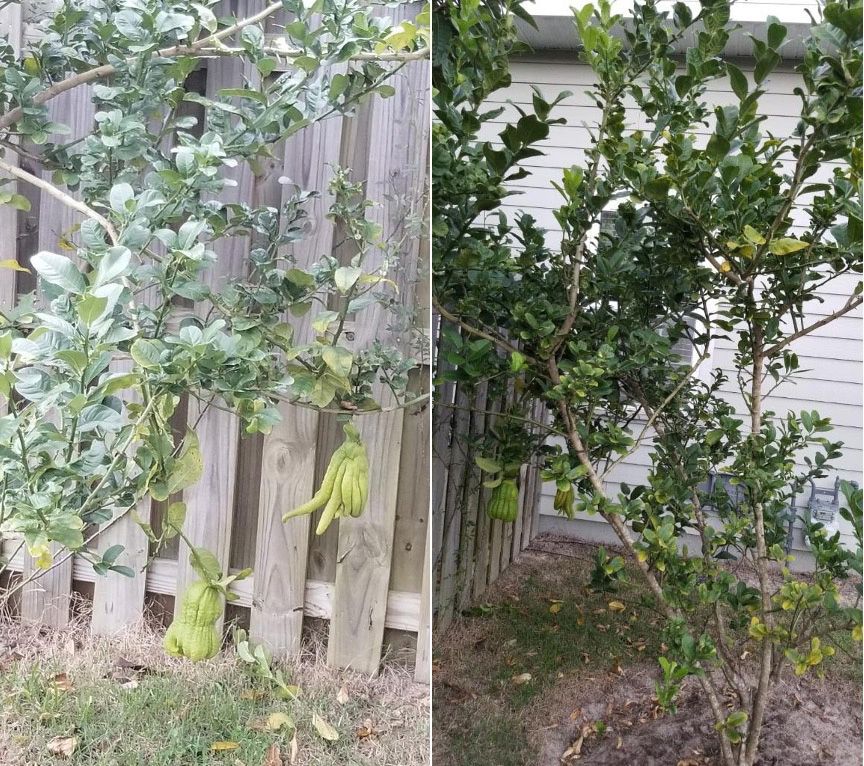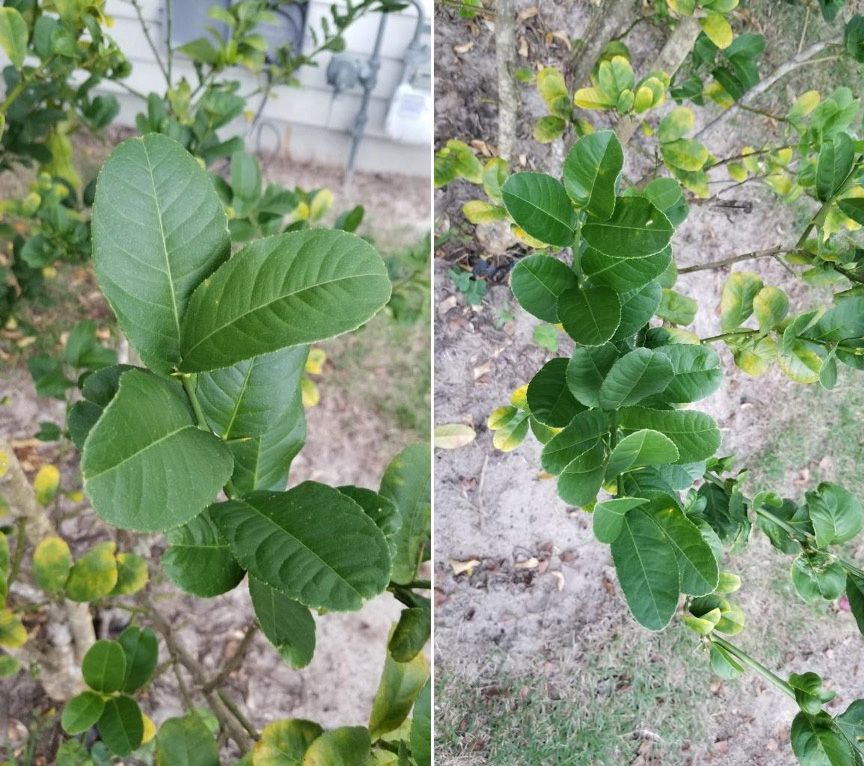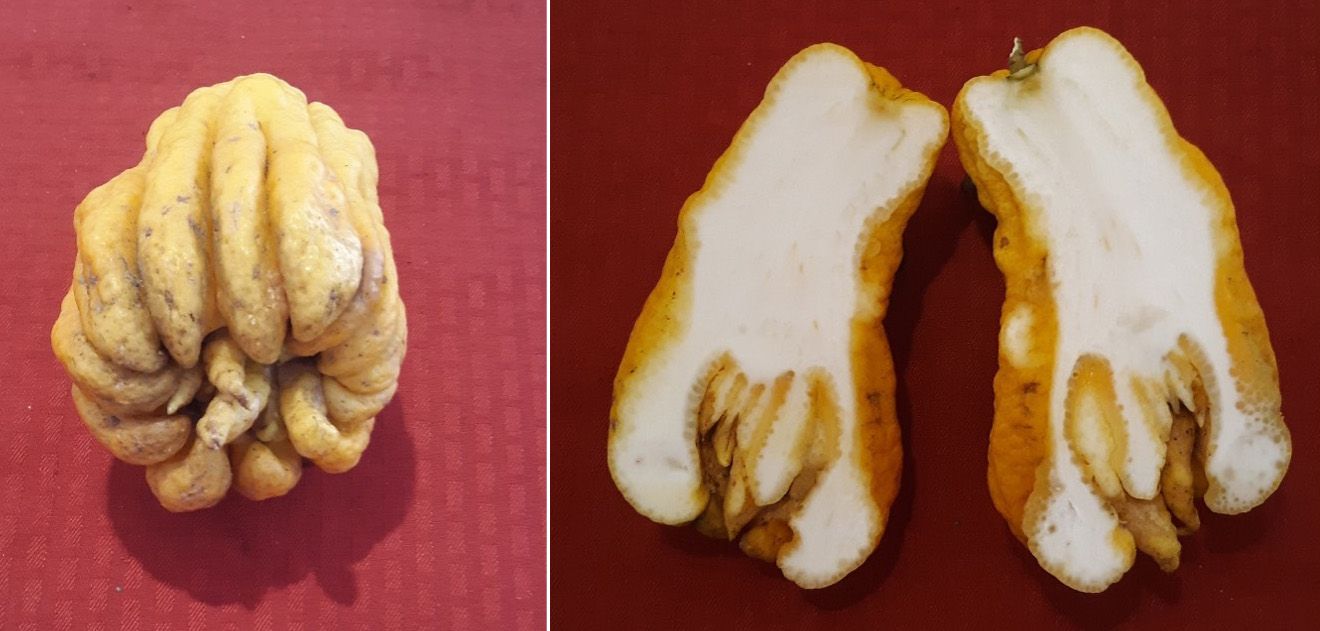General Description
Citron is one of the oldest types of citrus plants and is considered as one of the progenitor species of citrus. Fingered citron (Citrus medica var. sarcodactylis (Siebold ex Hoola van Nooten) Swingle), also known as “Buddha’s hand,” is a unique citron cultivar. The fruit of fingered citron is split into numerous sections that resemble fingers (Lim 2012). Although considered a single variety in the United States, in China, fingered citron has been classified into many varieties and subvarieties, such as ‘Chuan’, ‘Guang’, and ‘Yun’, according to fruit shape and growth habit (Karp and Hu 2018). Citron is native to northeastern India and was carried into China by Buddhist monks around the 4th century CE (Karp and Hu 2018). Fingered citron has been cultivated for at least 1,000 years in southern China and Japan (Karp and Hu 2018). The purpose of this article is to introduce fingered citron to county Extension faculty, students interested in crop production, growers, certified crop advisors, crop consultants, consumers, environmentalists, and policy makers in the agricultural sector for better production, consumption, and environmental sustainability. Fingered citron is not invasive for the state of Florida according to the 2019 FLEPPC List of Invasive Plant Species (http://bugwoodcloud.org/CDN/fleppc/plantlists/2019/2019_Plant_List_ABSOLUTE_FINAL.pdf).
Like the common citron, fingered citron grows on small evergreen trees or shrubs that reach six feet tall (Lim 2012) (Figure 1). The alternately arranged leaves have an oblong shape with serrate margins (Figure 2). Newly grown leaves, fragrant flowers, and fruit often appear purple, pink, and green, respectively (Lim 2012). The handlike fruit shape may display either open fingers or a closed fist (Lim 2012) (Figure 3). Like other citrus varieties, fingered citron fruit is a hesperidium, a specialized berry with a thick, leathery rind (Castner 2014). Flavedo, the outer colored part of the rind, turns yellow and becomes extremely fragrant during maturation (Karp and Hu 2018) (Figure 4). Fruit size ranges from four to eight inches long. Although the fruit can be lengthy, juicy pulp underneath the flavedo is often absent. Instead, a thick but spongy albedo (the inner, white part of the rind), which is not edible, is present (Figure 4).

Credit: Guodong Liu, UF/IFAS

Credit: Guodong Liu, UF/IFAS

Credit: Guodong Liu, UF/IFAS

Credit: Fernando Alferez, UF/IFAS
Cultivation Practices
Fingered citron is propagated vegetatively from cuttings because it is generally seedless (Karp and Hu 2018). Rooting success has been observed by taking green-wood cuttings above and below a single bud (medial cut) and applying 500–1000 ppm indole-3-butyric acid (IBA) plant rooting regulators (Al-Zebari and Al-Brifkany 2014; Yushi 2005). This citron may be grown outdoors as a small evergreen tree or in large containers. However, fingered citron is very cold-sensitive and cannot tolerate frost, so it can only be grown outdoors in south Florida or in protected locations in central and north Florida. At temperatures below 45°F, fingered citron leaves wilt, photosynthetic rates decrease, and in severe cases, the tree dies (Guo et al. 2009; Yang et al. 2012). In areas with frost, trees can be transplanted to big containers and overwintered indoors with sufficient sunlight. Plant flowering and fruiting can also stagnate if undergoing cold stress (Yang et al. 2012). Fruit matures and is ready to harvest from November to January, but eventually some fruits may appear year-round. Fruit may appear as soon as one year after planting the tree, but normally good production starts after three years. As with any other citrus, growing fingered citron successfully requires well-drained and rich soil. In a home or backyard setting, watering should be done only when soil is dry, with no overwatering, and trees should be planted in a sunny spot.
Like other citrus, fingered citron is susceptible to pests, including citrus rust mite (Phyllocoptruta oleivora Ashmead) and citrus snow scale (Unaspis citri Comstock). Citrus rust mites feed on the stems, leaves, and fruit, resulting in cosmetic damage, slow fruit development, and leaf abscission (Bharathi et al. 2018). Snow scale is an armored-scale pest that infests citrus trunks and limbs. Successful control of snow scale can be achieved through introduction of natural enemies, such as ladybeetles and parasitic wasps, and pesticide application (Singh et al. 2020). A complete list of recommended chemical treatments for these and other citrus pests can be found in the Florida Citrus Production Guide (Diepenbrock, Dewdney, and Vashisth 2020). If applying a chemical pesticide, always read the label for details on how to safely and effectively apply the pesticide.
In Florida, a threat for fingered citron cultivation is citrus greening, a.k.a. huanglongbing (HLB). Citrus greening results in leaf mottling and fruit drop. The Asian citrus psyllid (Diaphorina citri) vectors this disease. It is known that the bacteria associated with the greening disease can also affect fingered citrons, and symptoms from the disease have been observed (Deng et al. 2008). Please consult the Florida Citrus Production Guide for information on psyllid management.
Uses
Fingered citron has long been used for ornamental and religious purposes in China and Japan due to its shape (Lim 2012). In China, fingered citron is grown in pots as an ornamental plant because it symbolizes happiness and longevity (Yang et al. 2012). The segmented appearance of fingered citron makes this cultivar unique. The fingered citron tree also has ornamental value because of its small size and showy pinkish flowers. Fingered citron fruit has a potent lemony citrus fragrance, and the tree has been traditionally used as an insect repellent and air freshener (Lim 2012; Yang et al. 2012). Dwarf fingered citron cultivars, such as ‘Aihua’, have short shoot lengths, short internode lengths, compact crowns, small leaves, and few thorns, indicating suitability for indoor ornamental bonsai use (Yang et al. 2012).
Complete and comprehensive nutritional information regarding fingered citron is scarce because its main use has been ornamental and religious.Although the albedo lacks bitterness and is entirely edible, there is little pulp inside. Fingered citron fruit can be eaten whole, but it is more commonly candied or made into jam. To use fingered citron, first pickle it in salt to remove bitterness. Then, steam the fruit to soften it. The softened fruit can then be made into candy or peeled into zest. Because of its citrus aroma and flavor, fingered citron peel has been used in seafood dishes, salads, and rice. Fresh slices can also be used in marinades or as garnishes (Lim 2012).
Fingered citron has long been used in traditional Chinese medicine (Wu et al. 2013). Fingered citron is believed to be beneficial for pancreas, liver, and stomach health. People in East Asia also often use it as an herbal medicine to treat chronic diseases such as asthma (Wu et al. 2013). Essential oils in fingered citron play an important role against bacteria. The oils are rich in esters and ethanol and can inhibit the growth of Escherichia coli. The aldehydes present in fingered citron are shown to have strong antibacterial activity against Enterococcus faecalis (Wang et al. 2020). The oils also show great antioxidant activities and anti-inflammatory effects due to presence of limonene and γ-terpinene (Kim et al. 2013; Wu et al. 2013). The presence of phytochemicals, such as xanthyletin and nordentatin, in the root and stem barks of fingered citron also show anti-inflammatory effects (Lim 2012; Yang et al. 2012). Fingered citron fruits can boost secretion of insulin to fight against type 2 diabetes (Peng et al. 2009).
From a plant health standpoint, fingered citron exhibits natural resistance to citrus canker (Xanthomonas citri subsp. citri; Xcc), which suggests a potential use in future canker-resistance breeding programs (Kumar et al. 2013).
Acknowledgments
Dr. Edward Hanlon, professor emeritus at the University of Florida, reviewed the manuscript. Dr. Sihong Song, professor at the University of Florida, let us take photos from his yard.
References
Al-Zebari, S. M. K., and A. A. M. Al-Brifkany. 2014. “Effect of Cutting Type and IBA on Rooting and Growth of Citron (Citrus medica L).” American Journal of Experimental Agriculture 5 (2): 134–138. https://doi.org/10.9734/AJEA/2015/10973
Bharathi, V. D., C. P. Viji, K. P. Kumar, V. S. Vani, P. D. Reddy, A. Nehra, and R. K. Nayak. 2018. “Biodiversity of Mites in Horticultural Ecosystems.” Progressive Research – An International Journal 13 (4): 306–310.
Castner, J. L. 2004. “Rutaceae – Citrus family.” In Photographic Atlas of Botany and Guide to Plant Identification, 198. Gainesville, Florida: Feline Press.
Deng, X., J. Chen, Z. Shan, G. Zhou, H. Li, and E. L. Civerolo. 2008. “Identification of ‘Candidatus Liberibacter asiaticus’ from Foshou (Citrus medica) in China.” Plant Pathology 57 (2): 365. https://doi.org/10.1111/j.1365-3059.2007.01757.x
Diepenbrock, L. M., M. M. Dewdney, and T. Vashisth (eds.). 2020. 2020–2021 Florida Citrus Production Guide. Gainesville: University of Florida Institute of Food and Agricultural Sciences. https://doi.org/10.32473/edis-cg101-2020
Guo, W. D., J. S. Zheng, Z. Z. Zhang, W. R. Chen, and Y. P. Guo. 2009. “Effects of Short Term Chilling Stress on the Photosynthetic Physiology of Fingered Citrons (Citrus medica var. sarcodactylis Swingle).” Acta Ecologica Sinica 29 (5): 2286–2293.
Karp, D., and X. Hu. 2018. “The Citron (Citrus medica L.) in China.” Horticultural Reviews 45:143–197. https://doi.org/10.1002/9781119431077.ch5
Kim, K. N., Y. J. Ko, H. M. Yang, Y. M. Ham, S. W. Roh, Y. J. Jeon, G. Ahn, M. C. Kang, W. J. Yoon, D. Kim, and T. Oda. 2013. “Anti-inflammatory Effect of Essential Oil and Its Constituents from Fingered Citron (Citrus medica L. var. sarcodactylis) through Blocking JNK, ERK and NF-κB Signaling Pathways in LPS-activated RAW 264.7 Cells.” Food and Chemical Toxicology 57:126–131. https://doi.org/10.1016/j.fct.2013.03.017
Kumar, N., R. C. Ebel, and P. D. Roberts. 2013. “Citrus Section Responses of Citrus medica L. var. sarcodactylis during Xanthomonas citri subsp. citri Infection.” Proceedings of the Florida State Horticultural Society 125:108–111.
Lim, T. K. 2012. “Citrus medica var. sarcodactylis.” In Edible Medicinal and Non-medicinal Plants: Volume 4, Fruits, 690–694. Springer, Dordrecht. https://doi.org/10.1007/978-94-007-4053-2_85
Morton, J. 1987. “Citron.” In Fruits of Warm Climates, edited by Julia F. Morton, 179–182. Miami, FL.
Peng, C. H., Y. B. Ker, C. F. Weng, C. C. Peng, C. N. Huang, L. Y. Lin, and R. Y. Peng. 2009. “Insulin Secretagogue Bioactivity of Fingered Citron Fruit (Citrus medica L. var. Sarcodactylis Hort, Rutaceae).” Journal of Agricultural and Food Chemistry 57 (19): 8812–8819. https://doi.org/10.1021/jf902143x
Singh, S. P., P. V. R. Reddy, and S. Deka. 2020. “Sucking Pests of Citrus.” In Sucking Pests of Crops, edited by Omkar, 481–515. Singapore: Springer. https://doi.org/10.1007/978-981-15-6149-8_16
Wang, F., H. You, Y. Guo, Y. Wei, P. Xia, Z. Yang, M. Ren, H. Guo, R. Han, and D. Yang. 2020. “Essential Oils from Three Kinds of Fingered Citrons and Their Antibacterial Activities.” Industrial Crops and Products 147:112172. https://doi.org/10.1016/j.indcrop.2020.112172
Wu, Z., H. Li, Y. Yang, Y. Zhan, and D. Tu. 2013. “Variation in the Components and Antioxidant Activity of Citrus medica L. var. sarcodactylis Essential Oils at Different Stages of Maturity.” Industrial Crops and Products 46:311–316. https://doi.org/10.1016/j.indcrop.2013.02.015
Yang, L., J. Ye, W. D. Guo, C. C. Wang, and H. T. Hu. 2012. “Differences in Cold Tolerance and Expression of Two Fatty Acid Desaturase Genes in the Leaves between Fingered Citron and Its Dwarf Mutant.” Trees 26:1193–1201. https://doi.org/10.1007/s00468-012-0695-6
Yushi, L. 2005. “Technique of Intermittence Mist Propagation of Green-Wood Cuttings with Single Bud of Fingered Citron.” Forestry Science and Technology 2:4.